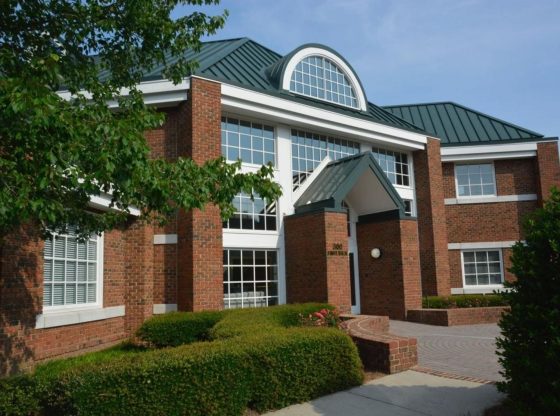Moore County’s projected growth and the necessary infrastructure to support it are often the subject of discussion.
Infrastructure planning is more than just roads. Increased development and a growing population mean an increased demand for water.
At the March 12 meeting of the Pinehurst Village Council, Pinehurst Mayor Patrick Pizzella introduced Moore County Public Works Director Randy Gould. Pizzella said, “The water issue, for lack of a better phrase, is on a lot of people’s minds.”
Gould’s opening comments included a reference to the large number of their customers residing in Pinehurst. “Pinehurst is by far the largest customer base, so it is very important that we have and provide for the needs of all our customers,” said Gould, referring to Pinehurst having 11,000 — 12,000 customers out of the county’s 18,000.
Gould presented an overview of a water study that LKC Engineers had just completed. During his information-only presentation, Gould presented the Village of Pinehurst Council with a water source update that included data on Moore County’s current water sources, the projected necessary water supply, and alternative water supplies that the Moore County Board of Commissioners considered.
Gould presented a map illustrating the interconnected 10 water systems in Moore County — five (Vass, Seven Lakes, Pinehurst, Hyland Hills, and East-Moore Water District) are interconnected. Gould said these five were looked at with a “deep dive” into water sourcing.
Currently, Moore County purchases water at the volumes indicated by the following municipalities:
*Pinehurst — 2.23 million gallons per day (sourced from 17 wells)
*Harnett County — 3 million gallons per day (sourced from the Cape Fear River)
*Town of Southern Pines — 1 million gallons per day (sourced from the Lumber River)
*Town of Aberdeen — 600,000 gallons per day (sourced from wells)
Moore County purchases 6.83 million gallons of water daily. Gould said this seems like a lot of water, “but the needs are at least that much.” Contracts with the Town of Aberdeen expire in 2025, and the agreement with Southern Pines is up for renewal in 2028. The contract with Harnett County doesn’t expire until 2112.
Renewals of the water purchasing agreements with the Town of Aberdeen and Southern Pines are not guaranteed. With the estimated projections for population growth, Moore County could experience a water shortage (a gap in the supply and demand) as early as 2029.
Short-term solutions include a contract for two new wells (approved by the Moore County Board of Commissioners) that will be drilled off Linden Road in Pinehurst for $125,000. Funding for the new wells will come from the American Rescue Plan Act.
Gould also presented the possible water supply sources the Moore County Board of Commissioners considered, including drawing water from the following sources: Drowning Creek in the southern part of the county (cost of $117.4 million), Deep River in Robbins ($149.7 million), and Deep River in Carbonton ($198.3 million). Other possible options were purchasing from Harnett County and Sanford.
Gould indicated that the Moore County Board of Commissioners is recommending the Carbonton option, which includes a water treatment plant near Carthage (with a 3 million gallon per day capacity), pipelines to carry the water from the Deep River, and a reservoir to store the water. This option would consist of two phases. The first phase costs $113 million and provides a 3 million-gallon daily capacity. (Note: The Board of Commissioners has not scheduled a vote on this option).
Pizzella asked Gould how the Carbonton project would be financed. Gould stated, “Water rates will increase 11 percent next fiscal year. We are going to have to increase water rates to accommodate that and build that fund. Beginning July 1, we’ll have an 11% increase.”
Gould was asked about cost drivers other than population projections; he said, “Losing our capacity is what took us off guard.” We did not know Southern Pines and Aberdeen would no longer sell us that capacity. It just happened over the last few years.” Gould didn’t blame those towns, saying, “They have their needs, too.”
Toward the close of Gould’s presentation, council member John Taylor concluded that “this looks like a big job and a lot of projections.”
Pizzella suggested examining “alternative scenarios” in which projected population growth is less than 75% over the next 25 years would be useful. What if we grow 50% over the next 25 years? How does that impact some of these projections?
Gould’s response: “You have to do Phase 1 anyway; you could wait on Phase 2.”
Pizzella closed the presentation by commenting, “This is obviously a big issue for them (Pinehurst Council members) and affects our residents significantly. Everyone in Pinehurst likes to take a bath.”
 ~ Written by Sandhills Sentinel reporter Maggie Sergio. A resident of Moore County since 2016, Maggie was one of the first reporters for Sandhills Sentinel. She started covering local stories for Sandhills Sentinel in 2018 and has recently rejoined the reporting staff. Maggie previously contributed to the Huffington Post, covering social and environmental justice issues. Maggie is an accomplished grant writer, having secured funding for several nonprofit organizations.
~ Written by Sandhills Sentinel reporter Maggie Sergio. A resident of Moore County since 2016, Maggie was one of the first reporters for Sandhills Sentinel. She started covering local stories for Sandhills Sentinel in 2018 and has recently rejoined the reporting staff. Maggie previously contributed to the Huffington Post, covering social and environmental justice issues. Maggie is an accomplished grant writer, having secured funding for several nonprofit organizations.




















Comments
Comments are closed.